
Alternatively, the Centaurus constellation is commonly known as Centaurus. It is actually a region located in the Northern Hemisphere, positioned along a line that stretches from the Big Dipper to Virgo. Furthermore, it is situated south of the equator.
In reality, the Centaurus constellation is recognized as one of the largest and brightest constellations. It holds the 9th position in terms of its size.
By the way, its expanse spans across 1060 square degrees.
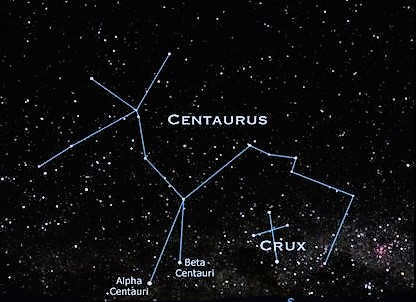
What does the Centauri constellation consist of?
It can be said that it forms a significant part of the universe. Interestingly, it does not include any astronomical objects listed in Messier’s catalog.
However, it does have 11 stars, which are known to have a high number of planets. It is worth mentioning that three meteor streams have been discovered within this constellation.
Meteor showers of the Centaurus constellation:
Belonging to the Hercules group, the Centaurus constellation is known for its numerous meteor showers. These showers share similar speeds and directions with other stars in the group.
Notable stars in the Centaurus constellation
Fascinatingly, the Centaurus constellation contains the two brightest stars ever discovered in the entire universe.
1) Alpha Centauri
2) Beta Centauri.
Despite their position in the foreground, these stars serve as a guide to the Southern Cross. It is interesting to note that the Southern Cross lies below the rear hooves of the Centaur figure.
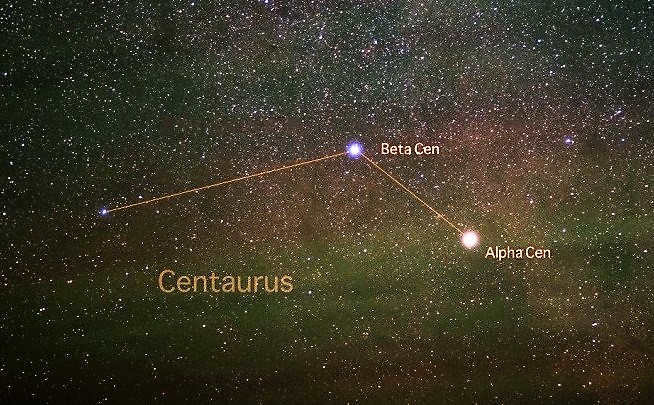
The triple system of Alpha Centauri
Star A is very similar to the Sun, but it has a greater mass. Additionally, it ranks as the 4th brightest star. Translated Rigel means hoof or foot.
Alpha B is also similar to the primary companion and is a main sequence star. However, it is not as luminous and is smaller in size compared to the Sun.
Scientists estimate that the Alpha constellation formed approximately 4.85 billion years ago.
Alpha C — Proxima Centauri is classified as a red dwarf. Interestingly, it is the closest star to our system. It is also gravitationally connected to its companions.

Many Centauri stars display a distinct blue-white color, such as Beta (Hadar), Epsilon, Nu, BPM 37093. The first three stars mentioned are classified as giants, while the last one is a dwarf.
Moreover, Gamma (Muliphene), Zeta, and Kappa stars exist in binary systems.
Delta and Eta Centauri are categorized as B-type stars.
However, Theta Menkent is an orange giant.
Other celestial objects
The galaxy Centauri A, also known as NGC 5128, is considered to be one of the most luminous galaxies in existence. Not only is it massive and elliptical in shape, but it also possesses features of a lenticular galaxy. Scientists speculate that it may harbor a supermassive black hole at its center.
Within the Centauri constellation lies the largest and brightest globular cluster known as Omega globular cluster or NGC 5139. Remarkably, this cluster can even be observed with the naked eye.
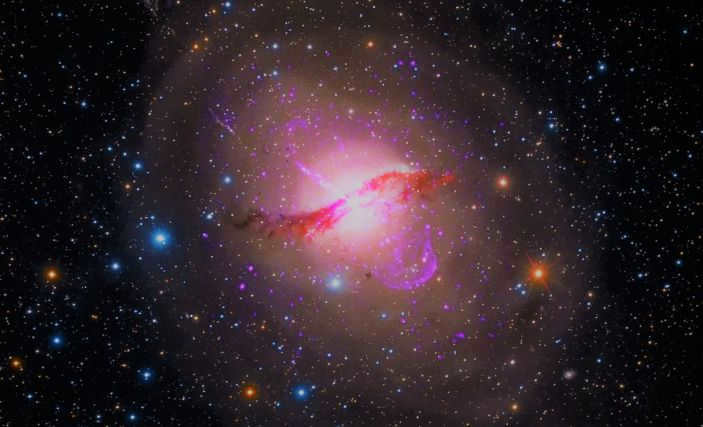
Furthermore, the Centauri constellation also harbors NGC 4945, which happens to be the most luminous galaxy within Centaurus A.
Additionally, there is NGC 4650A. This particular galaxy possesses an outer ring of stellar gas that orbits around its poles.
We can also observe the most brilliant planetary nebula residing in Centaurus. It goes by the name of NGC 3918 or Southerner, and it exhibits a blue coloration.
Moreover, Centaurus contains a considerable number of elliptical galaxies, and even a few irregular ones. Consequently, ongoing investigation and exploration of this constellation continues. Evidently, it comprises numerous luminous galaxies, stars, and other celestial components.
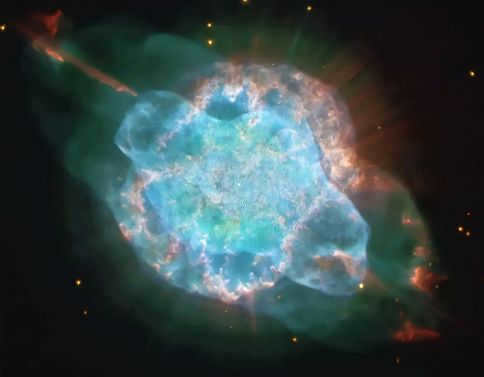
Legend
In ancient Greek mythology, the Centaur is a creature that is half-human and half-horse. In the most popular version of the myth, the representative of these extraordinary beings was Chiton, also known as Chiron, the son of Cronus. Chiron was a renowned teacher, instructing many legendary heroes such as Heracles, Achilles, Peleus, Perseus, and Theseus. The constellation was believed to have been named in his honor.


Observation
Astronomers suggest that the optimal time to observe the Centaurus constellation is during the months of March and April.
The stars located in the southern part of the sky are considered non-setting stars, meaning that they do not dip below the horizon for many locations on Earth.
In Russia, not all the stars of Centaurus are visible, but it is still visible to a certain extent. However, the further south you travel, the more prominent the visibility becomes.
“Stars will appear – the sky will adorn, knowledge will appear – the mind will adorn.”
Mongolian proverbs and sayings
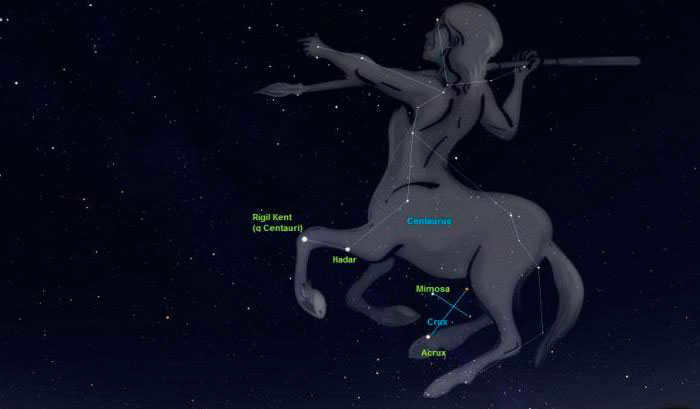
The starry sky is teeming with enigmatic and puzzling constellations, and one of the most intriguing among them is Centauri. This constellation boasts a plethora of celestial objects, including clusters, galaxies, and nebulae. Notably, it is also home to Proxima Centauri, the star closest to our planet.
Overview
Covering an expansive 1060 square degrees, Centauri ranks as the ninth largest constellation in the night sky. It shares borders with neighboring constellations such as Libra and Hydra to the north, the Southern Cross and Kiel to the south, Circlet and Wolf to the west, and Sails to the east.
Location
The Centauri constellation can be found in the southern hemisphere. It cannot be observed in its entirety from Russia. However, parts of the Centauri constellation are visible in March and April. The complete constellation can be seen from the southern region of Algeria and as you move closer to the equator.
In approximately 13,000 years, due to precession, the Centaurus constellation will be fully visible within the borders of Russia.
The Centaurus name originates from the legendary creature Centaurus, which was a hybrid of a man and a horse. Centaurs were commonly depicted in literature and painting during ancient times. In mythology, centaurs could either assist or oppose heroes. The renowned centaur figure in Greek mythology is Chiron.
Alpha Centauri
Alpha Centauri, also known as Rigil Kentaurus, is the closest star system to our solar system. It is located about 4.37 light-years away from Earth and is a triple star system consisting of three stars: Alpha Centauri A, Alpha Centauri B, and Proxima Centauri. Alpha Centauri A and Alpha Centauri B are similar to our Sun, while Proxima Centauri is a smaller and cooler red dwarf star.
Alpha Centauri is a popular target for scientific research and space exploration due to its proximity and potential for habitable planets. In fact, in 2016, an Earth-sized exoplanet named Proxima b was discovered orbiting Proxima Centauri within the habitable zone, raising hopes of finding life beyond our solar system.
Studying Alpha Centauri can provide valuable insights into the formation and evolution of stars, as well as the possibility of finding potentially habitable worlds. Scientists are particularly interested in studying the interactions between the three stars and how they affect the stability and habitability of any planets in the system.
Despite its proximity, reaching Alpha Centauri with current technology is a significant challenge. The fastest spacecraft ever launched, the Parker Solar Probe, would take thousands of years to reach Alpha Centauri. However, there are plans for future missions, such as Breakthrough Starshot, which aims to send tiny nanocraft to the star system using laser propulsion.
In summary, Alpha Centauri is a fascinating star system that holds great scientific potential. Its proximity and potential for habitable planets make it an exciting target for future exploration and the search for extraterrestrial life.
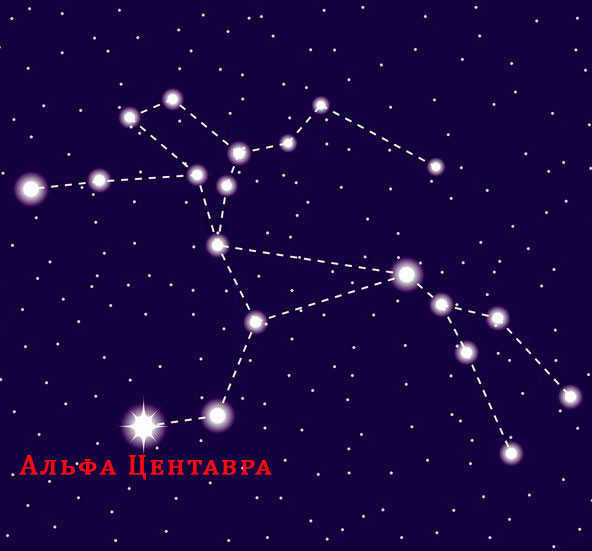

The leg of the horse is where you can find the brightest star of the constellation, Alpha Centauri. In ancient times, it was known as Rigel Centarius. It is the third brightest star, following Sirius and Canopus.
Alpha Centauri is a triple main-sequence star that is located 4.36 light-years away from our planet. It is one of the closest stars to Earth, second only to the Sun.
Alpha Centauri is also known by the name Toliman. Alpha A and Alpha B are situated relatively close to each other and can be seen as a single shining star with the naked eye. They revolve around a shared center of mass in slightly elongated elliptical orbits.
The stars require approximately 80 years to complete a full revolution, reaching a maximum distance of 35 astronomical units from each other, but when they approach each other, the distance decreases to only 11.3 astronomical units. Both stars have an apparent magnitude of -0.27m.
Alpha A
Alpha A has a mass that is 8% greater than the mass of the Sun. Its radius is 1.22 times the radius of the Sun. Its surface temperature and spectral class are similar to those of our star. However, Alpha A emits 1.5 times more light energy than the Sun. Alpha A is 6 billion years old, while our Sun is 4.5 billion years old.
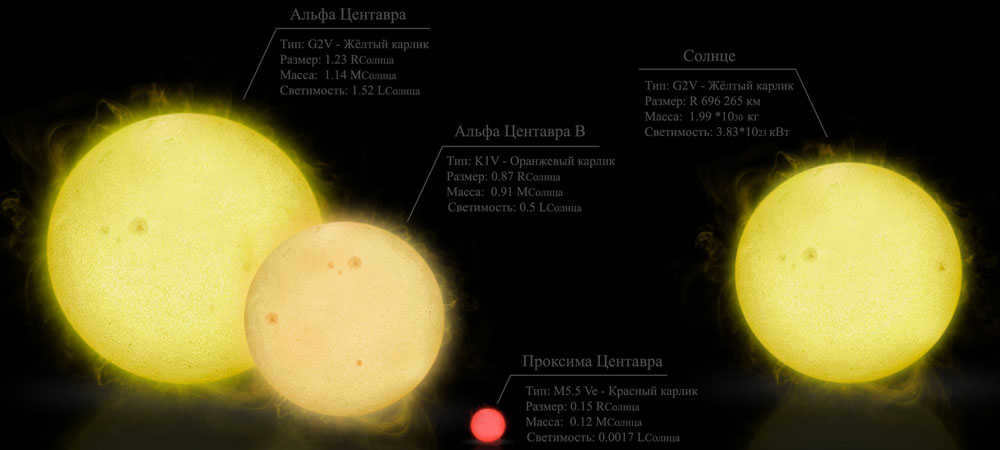
The most recent information indicates that no exoplanets have been discovered within close proximity to the star. Nonetheless, in 2021, an object was detected during observations of the star in the infrared spectrum, which has the potential to be classified as an exoplanet. Initial data suggests that its mass falls between 9 and 35 times that of Earth, with a size ranging from 3.3 to 7 times the radius of our planet.
It is currently believed that the object is situated at a distance of 1.1 astronomical units from Alpha Centauri and completes a full revolution around it in approximately one Earth year. These findings will require further confirmation from the James Webb Space Telescope and other ground-based observatories.
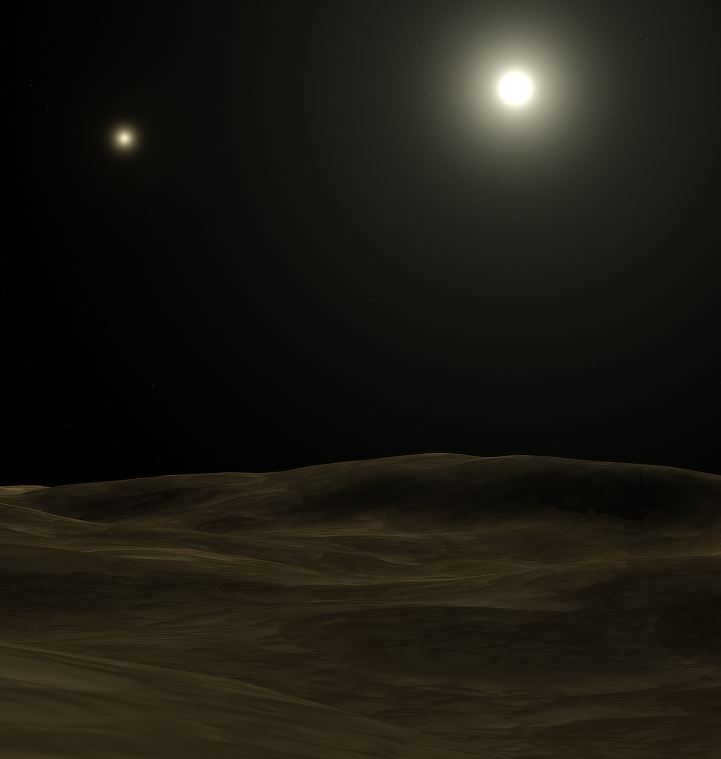
Alpha B
Alpha B is also classified as a main-sequence star. It has a mass that is 10% less than that of our Sun and a radius that is only 0.86 times the radius of our star.
The surface temperature of Alpha B is slightly cooler than that of the Sun, measuring at around 5260K or less than 5000°C. It is categorized as an orange star and has a brightness level that is only half that of the Sun.
Compared to other stars in its class, Alpha B emits a significantly higher amount of energy in the X-ray range. Observations have shown periodic occurrences of bright flares and emissions on the surface of Alpha B.
In 2012, researchers at the Geneva Observatory made an intriguing discovery after closely studying Alpha B for 4 years. They hypothesized the presence of an object orbiting the star with a period of 12 days and a radius slightly smaller than that of Earth. However, in 2015, further scrutiny revealed a mathematical error that had been overlooked during the initial calculations. As a result, the existence of the planet was debunked.
Proxima Centauri
The third element of the arrangement presents notable distinctions in comparison to the preceding two. It takes the form of a red dwarf, possessing a mass equivalent to merely 12% of that of the Sun, and a radius that is 7 times smaller than our star. Furthermore, the surface temperature of this celestial body exceeds 3000K, while its luminosity is a mere 17% of that exhibited by the Sun.
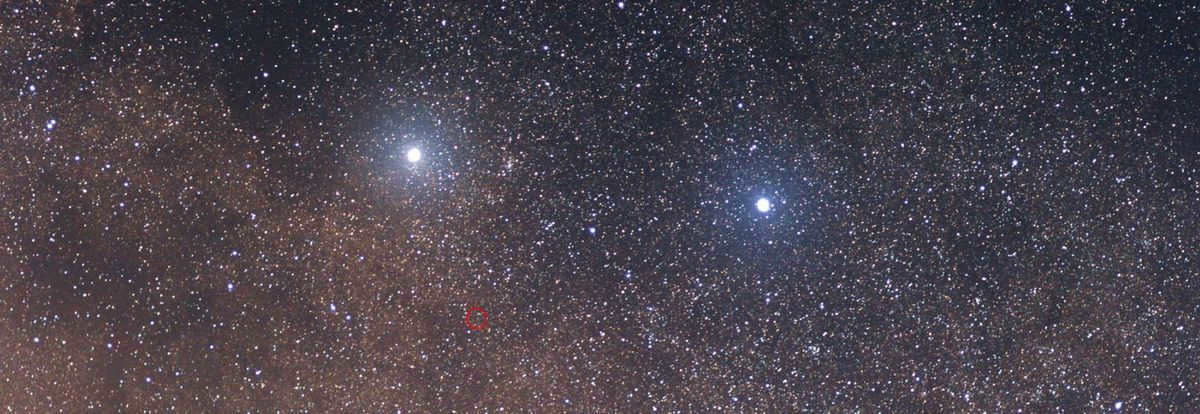
The celestial body is positioned 4.2 light-years away from our planet. It holds the distinction of being the nearest star to Earth. As a result, this star is referred to as Proxima Centauri, which translates to “nearest” in Latin.
Over time, the gap between our Sun and Proxima is slowly getting smaller. In approximately 26,700 years, the distance will have diminished to just 3 light-years. Due to its limited luminosity, this star cannot be observed without the aid of telescopic equipment.
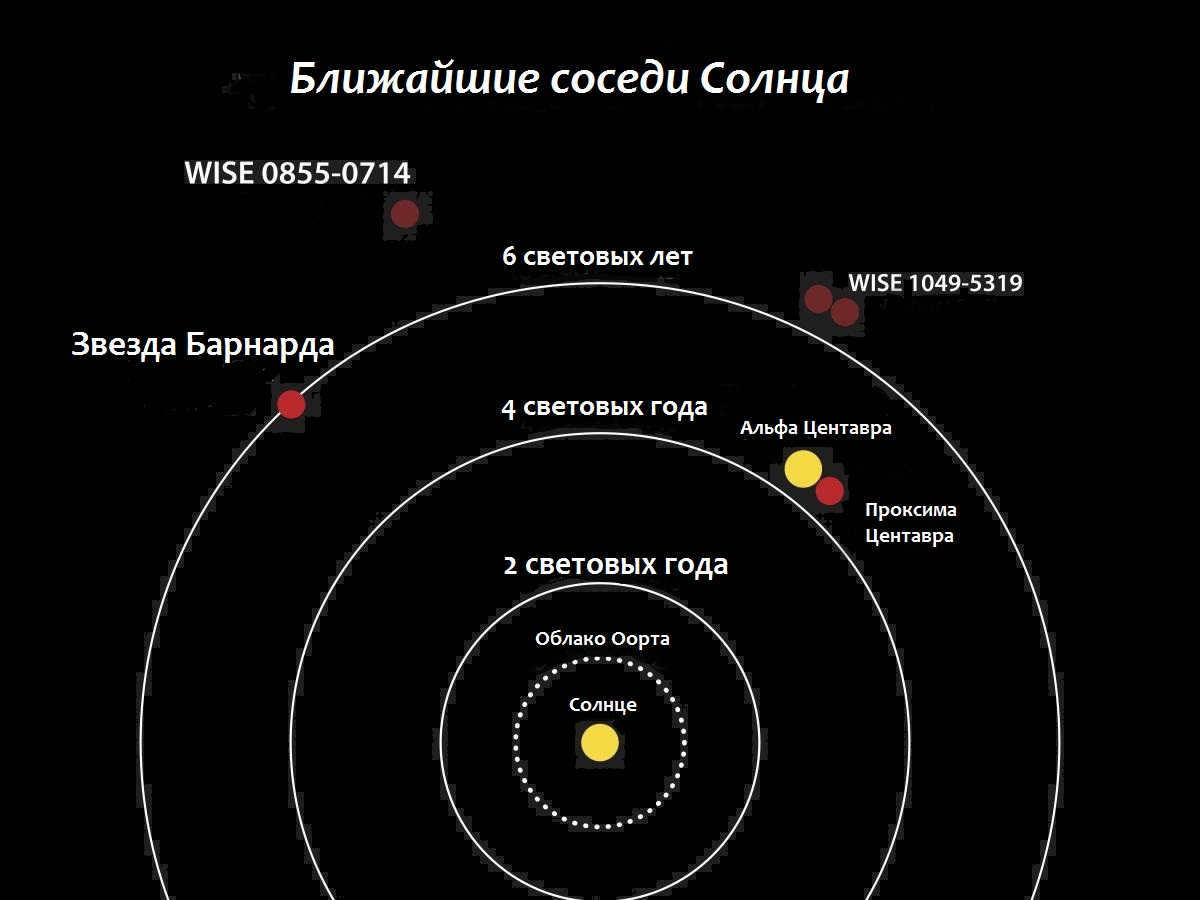
Currently, Proxima is situated at a distance of 13 thousand astronomical units or 0.21 light years from its companions within the stellar system. In 300 thousand years, the objects will come closest to each other and will be separated by a distance of 4100 light years. Proxima Centauri completes a total revolution around the common center of mass in 547,000 years.
The Proxima Centauri system is composed of 2 confirmed exoplanets and one hypothetical object.
In addition, the observation of the star in infrared radiation has revealed the presence of a dust ring around it. This indicates the presence of asteroids and other cosmic objects in the vicinity.
Beta Centauri
The Second Brightest Star in the Centaurus Constellation
Beta Centauri, also known as β Centauri or Hadar, is a binary star system located in the Centaurus constellation. It is the second brightest star in the constellation and one of the closest stars to Earth.
The primary star in the Beta Centauri system is a blue-white giant star, while the secondary star is a blue-white main sequence star. The two stars orbit around a common center of mass, completing a full orbit every 357 days.
Beta Centauri is a fascinating star system to study because of its binary nature and its relative proximity to Earth. Astronomers use it as a benchmark for understanding the evolution and dynamics of binary star systems.
In addition to its scientific importance, Beta Centauri also has cultural significance. It is one of the few stars in the night sky that can be seen from both the Northern and Southern Hemispheres, making it a popular subject for stargazers and astronomers around the world.
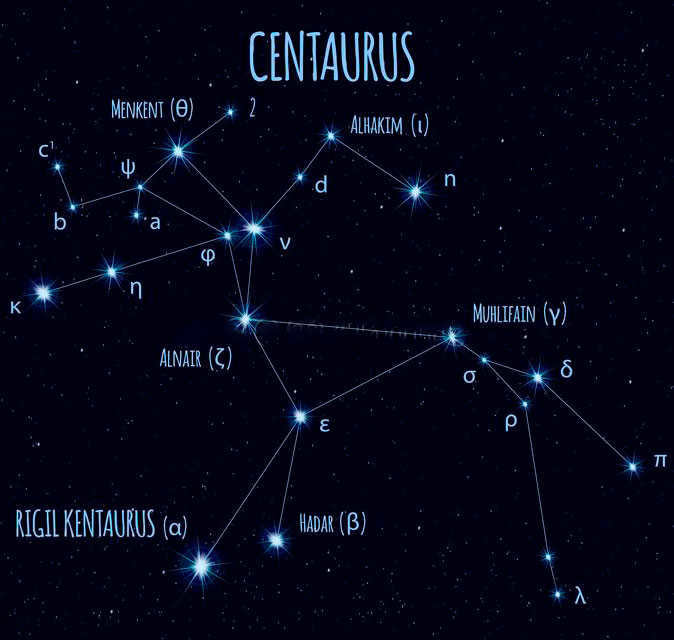
Hadar, also known as Agena or Beta Centauri, is the eleventh brightest star that can be seen from Earth. In Arabic, Hadar means “bottom”. This star is easily visible in the southern latitudes and is a blue-white giant located 392 sv years away from our planet. Its apparent magnitude is 0.61m.
By connecting Beta Centauri to Alpha Centauri with a line, you can use it as a guide to find the Southern Cross, which serves as a key reference point for determining the direction south.
Hadar is a system consisting of three stars, with two of them being in close proximity to each other. Beta Aa is located at a distance of about 1.3 seconds or 3 astronomical units (a.u.) from the other star. These stars belong to the B1 spectral class. Beta A, which has a surface temperature of 18,700K, is approximately six times more massive than the Sun. It is worth noting that these stars are continuously expanding, indicating that they will eventually undergo the fate of supernovae.
The third star in the Hadar system is known as Beta B, and it is classified as a blue dwarf star of spectral class B I. It takes approximately 1,500 years for Beta B to complete one orbital revolution around the other two stars. The distance between Beta B and its companions is approximately 210 astronomical units (a.u.).
All three stars in the system revolve around a shared center of mass.
Omega Centauri
Omega Centauri, also known as globular cluster NGC 5139, is a breathtaking celestial entity that boasts an astounding assemblage of millions of stars. Initially, this cluster was erroneously believed to be a solitary star. During the 2nd century AD, it was duly recognized and included as a star in Claudius Ptolemy’s Almagest catalog.
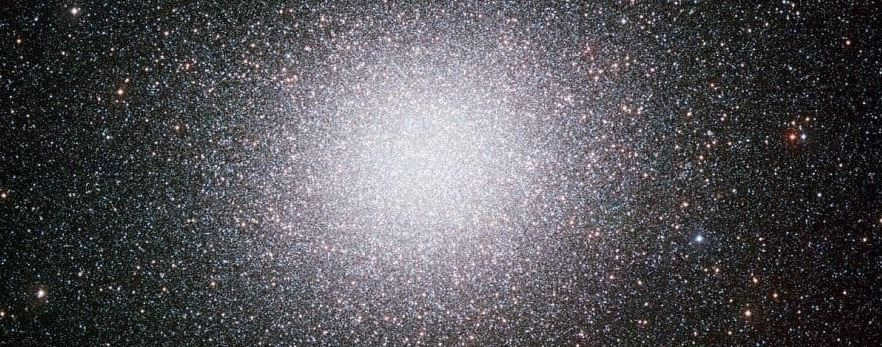
In 1677, astronomers initially classified it as a nebula. During the first half of the 19th century, John Herschel (or possibly James Dunlop) made the remarkable discovery of an entire cluster in place of a single star. However, it wasn’t until 1999, when data on star formation in different time periods became available, that the theory emerged that NGC 5139 was previously a galaxy.
The Omega Centauri constellation is situated at a distance of over 15,000 light-years from us and spans a diameter of 150 light-years. It has a total mass of approximately 5 million times that of our Sun. Its apparent magnitude is 3.9m.
Stars vary in age, but typically stars in similar systems are of similar age and form at the same time. New studies suggest that this is the biggest globular cluster in our galaxy. There is a hypothesis that the Milky Way has partially assimilated it.
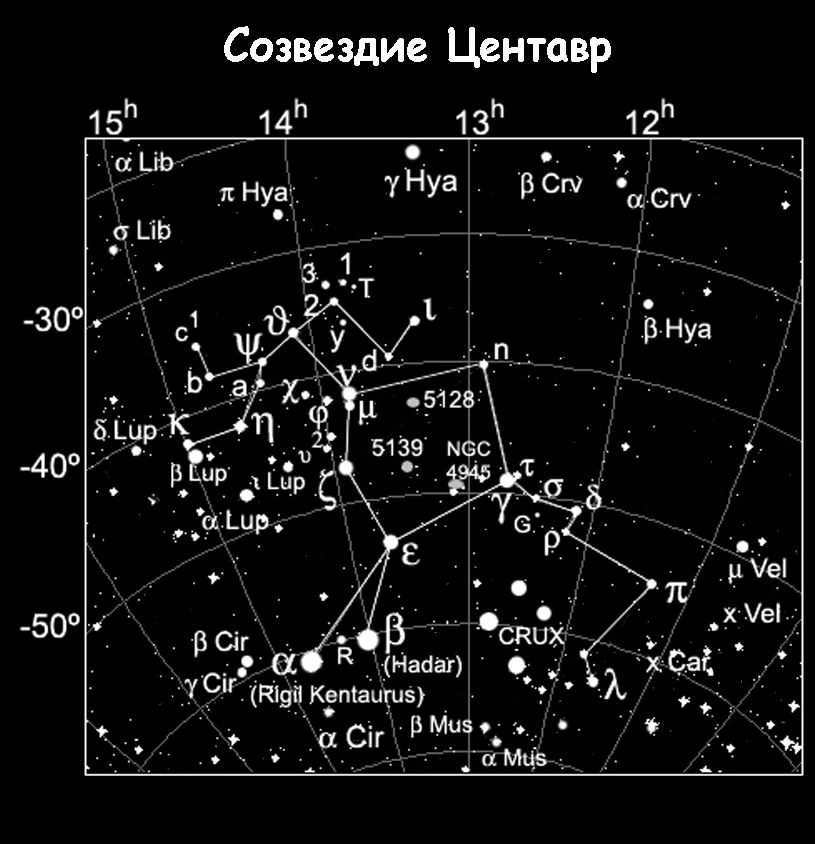
- Theta CentauriMenkent, or Theta Centauri.. Situated in the northern section of the constellation or referred to as the “shoulder” in Arabic. It is an orange giant classified as K0IIIb. It is positioned 60 light-years away from Earth. Its apparent magnitude is 2.06m. Its mass is equivalent to 4 times that of our Sun and its radius is 16 times that of the Sun.
- Gamma Muliphan, also known as Gamma Centauri, is a binary system located 130 sv years away from our system. It falls under the spectral class A0 and has an apparent stellar magnitude of 2.18m. The distance between the companions is 34a.u, and the stars have a rotation period of 83 years. The surface temperature of Gamma Muliphan is approximately 9000K.
- Epsilon Centauri, also known as Al Birdhaun or Birdun in ancient times, is a blue-white giant star of class B. It is a variable star with an apparent magnitude ranging from 2.29 to 2.31m. Epsilon Centauri is located 380 sv years away from the solar system.
Additional items
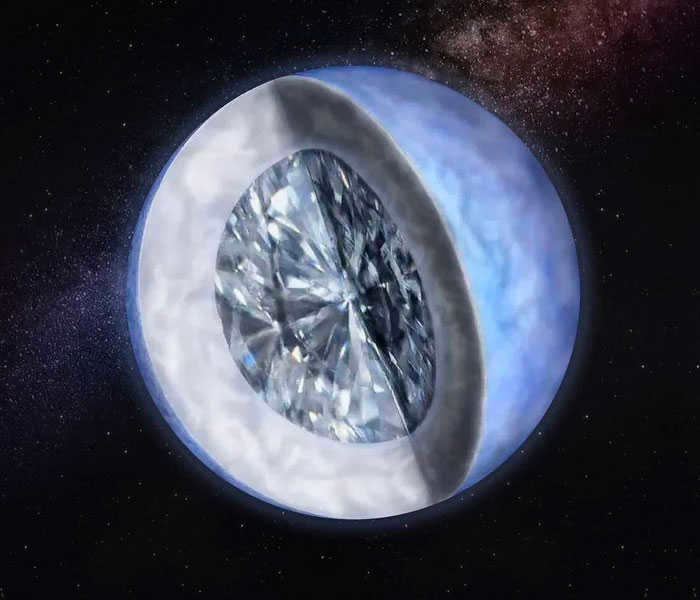
The constellation Centauri is home to a remarkable phenomenon – a pulsating white dwarf. This celestial body, with its hydrogen atmosphere and significant mass, is classified as a variable star.
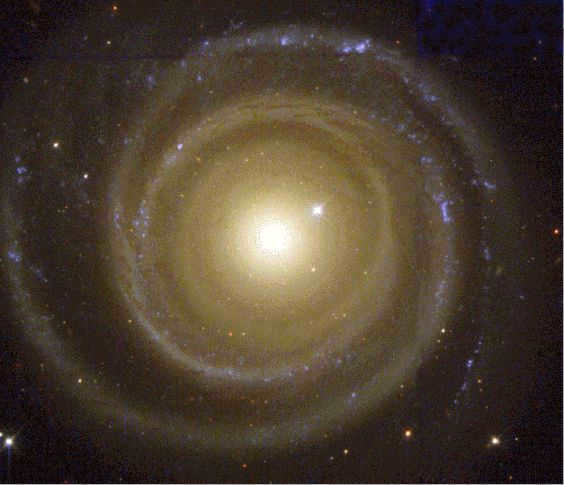
The spiral galaxy is located at a distance of over 100 million light-years from Earth. Within the galaxy, a supernova explosion has occurred.
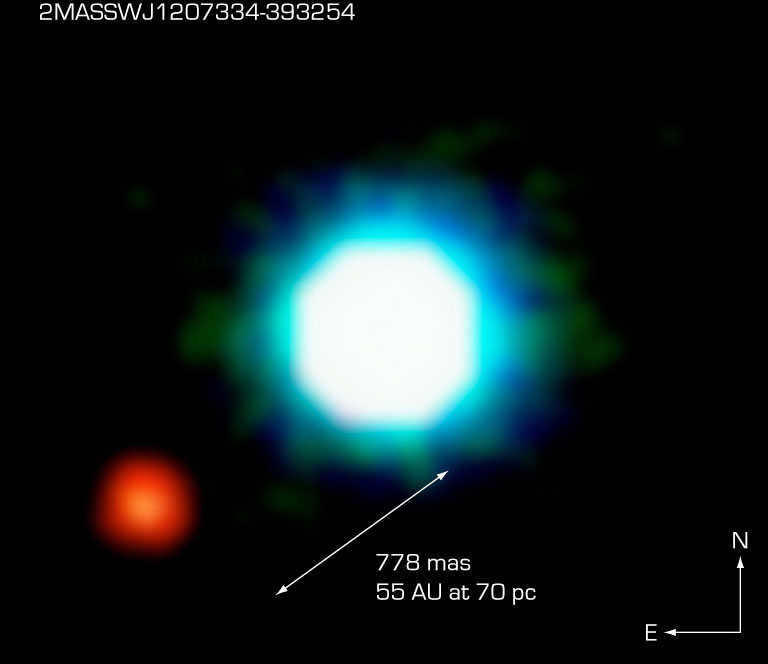
In the constellation of Centauri, there exists a brown dwarf that is thought to be accompanied by an exoplanet.
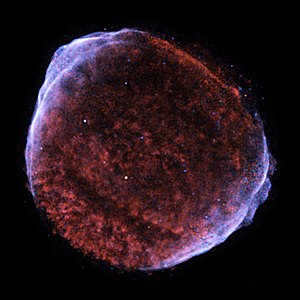
An erupting star in the constellation Wolf was discovered in the sky by Arab and Chinese astronomers in 1006. In 1965, the existence of gamma-ray sources was confirmed.
Currently, a gas and dust cloud measuring 60 sv years in diameter can be observed in the location of the star. SN 1006 is located 6800 sv years away from Earth.
Furthermore, the Centaurus constellation contains over two hundred significant star clusters, galaxies, and nebulae in addition to the aforementioned objects.
Answers to your questions
A gas giant is a type of planet characterized by a low density and composed primarily of hydrogen and helium, with heavy elements making up less than 13% of its total mass.
Centaurids refer to meteor streams that pass through the Centauri constellation during specific time periods. There are several types of Centaurids, including Alpha Centaurids, Omicron Centaurids, and Theta Centaurids.
In order to determine the stellar magnitude or luminosity of an object, it is crucial to have knowledge of both its distance from us and its intrinsic luminosity.
No, even in the southernmost regions of Russia, it is not possible to observe the Southern Cross constellation.
The main sequence is a phase in the development of a star during which thermonuclear reactions take place in its core.
Scientific Facts: A Video Review
The constellation Centaurus can only be partially seen from the middle latitudes of the Northern Hemisphere, and observing objects within it can be challenging due to its low position above the horizon.
Where and how to view the constellation
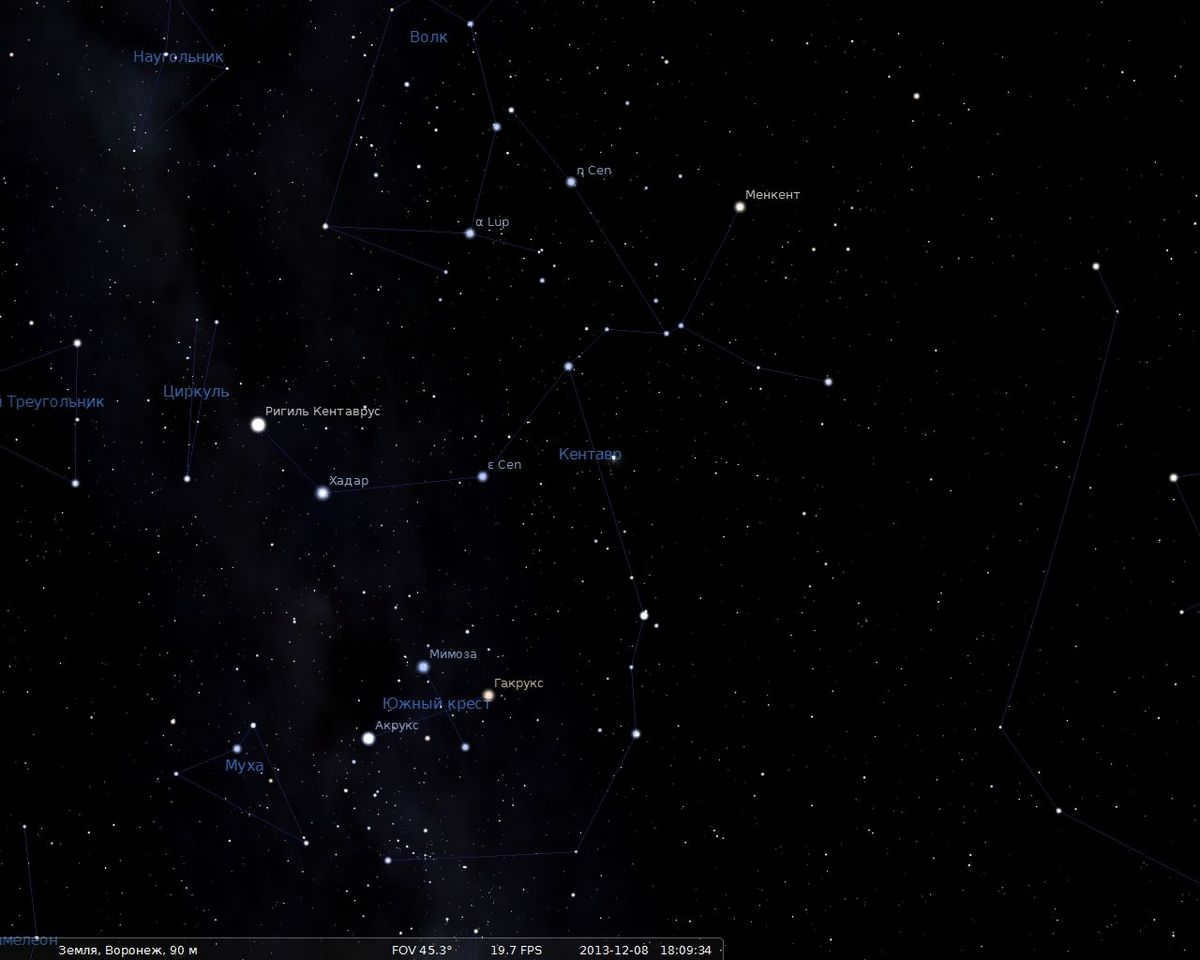

The constellation Centaurus, also known as Centaurus, can be seen rising above the southern horizon on a long spring night. However, this region of the sky is not easily visible to most people in the Northern Hemisphere due to its declination ranging from -30 to -64 degrees. Only half of the constellation Centaurus is visible at mid-northern latitudes.
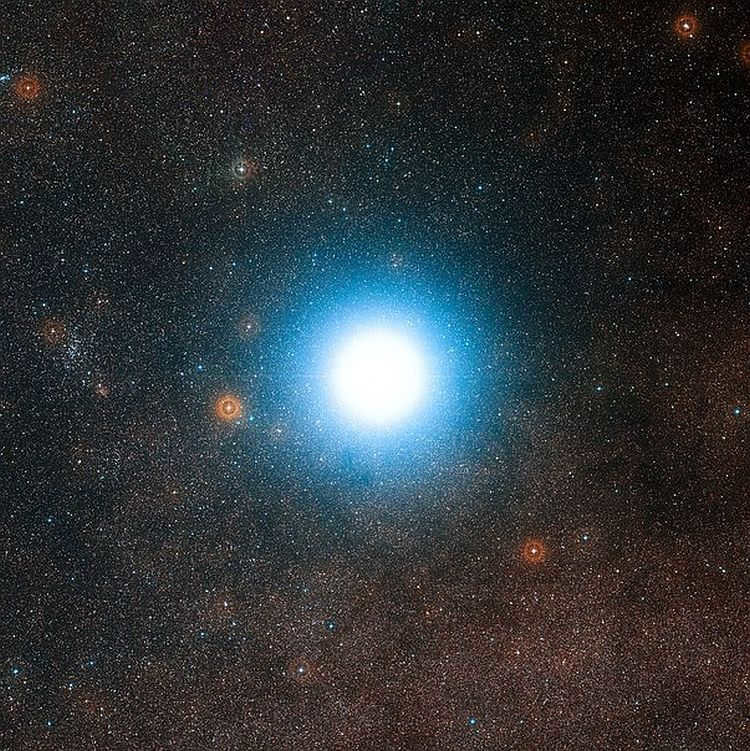
Alpha Centauri is the most luminous star in the Centaurus constellation, designated as α Cen. With an apparent magnitude of -0.27m, α Cen is a remarkable celestial object. Alpha Centauri is a complex system comprising three components: α Cen A, α Cen B, and Proxima Centauri. Although Proxima Centauri is often studied independently from the other two, together they form a physically multiple star system.
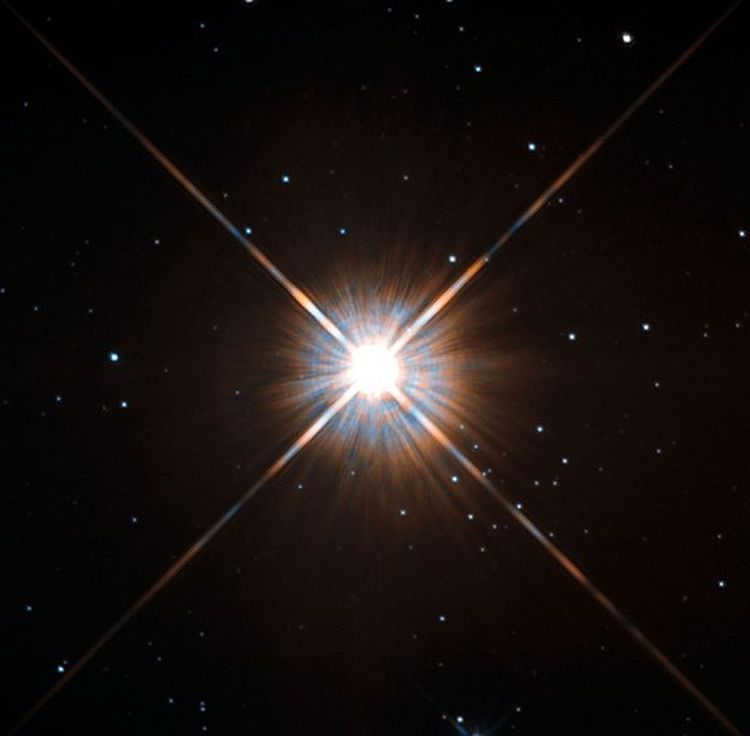
Photo of Proxima Centauri (taken by Hubble)
Components A and B possess identical astrophysical characteristics to our Sun, with similar spectral classes and size. Additionally, the star α Cen B has a planet resembling Earth. In contrast, Proxima, a red dwarf, stands as the nearest star to us, residing a mere 4.24 light-years away from the Sun.
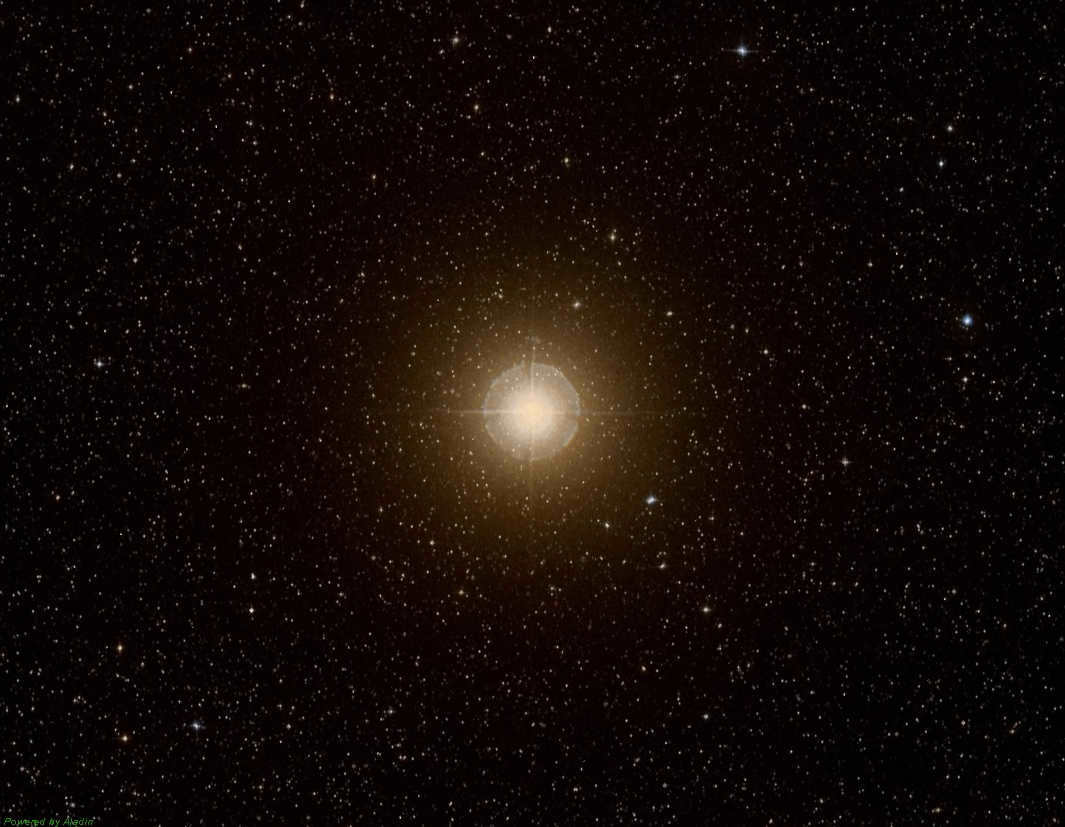
Photograph of Menkent or Theta Centauri
Menkent, also known as Theta Centauri, is the most prominent celestial object visible from regions with moderate latitudes. With a stellar magnitude of 2.1, this star is easily located by extending a line from Windematrix (ε Vir) to Spica (α Vir) towards the Southeast.
Observing Objects in Distant Space from Mid-Latitudes
When it comes to observing distant objects in space, the constellation Centauri offers a unique experience. However, only a select few can be seen from the Northern Hemisphere. One of these remarkable objects is NGC 5139, a bright globular cluster that has been known as ω Cen since ancient times.
The Fascinating Story of Omega Centauri
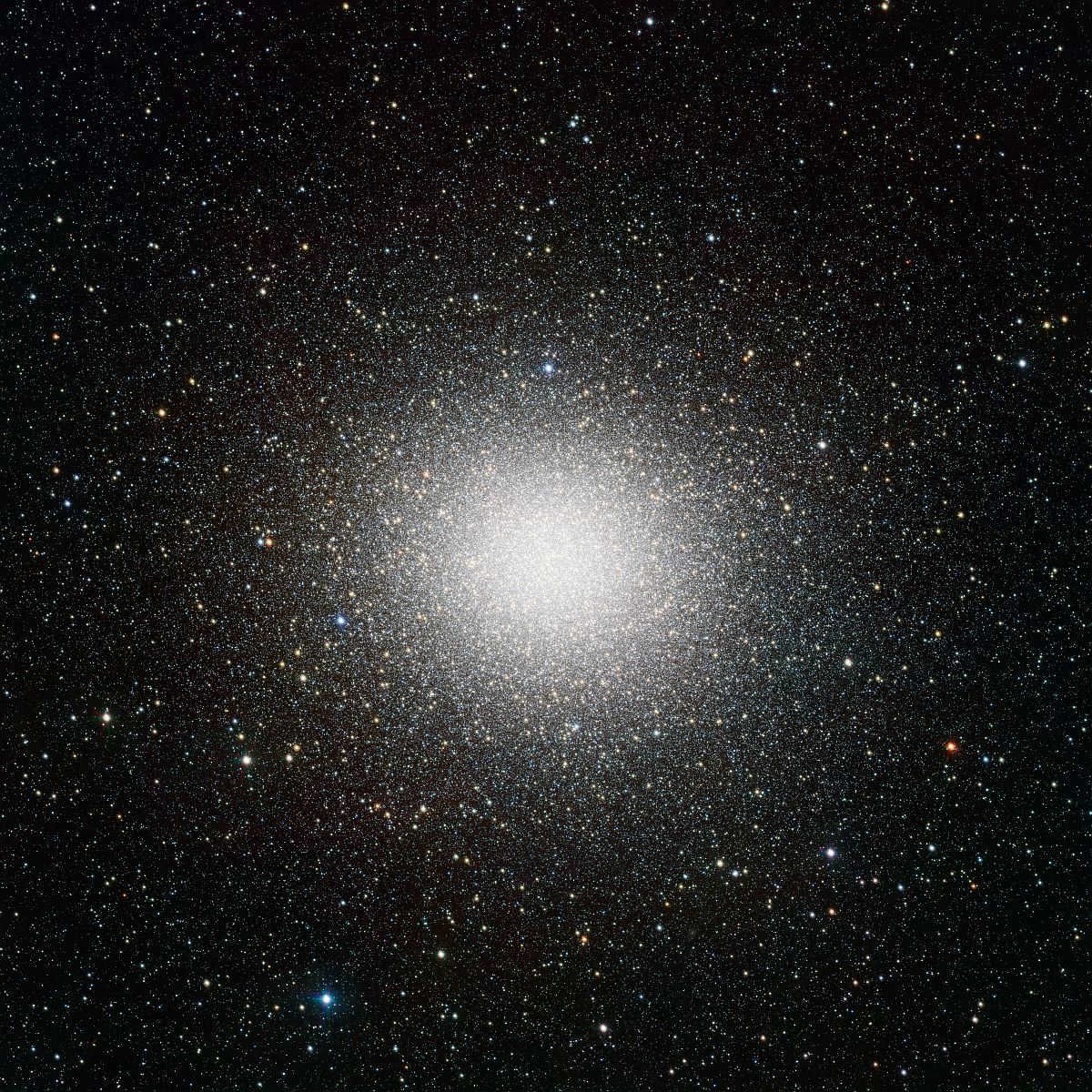
The cluster’s arrival in the sky in the form of a group has been surrounded by numerous contradictions. Since ancient times, it was regarded as a single star, and in the 2nd century AD, Claudius Ptolemy included it in his “Almagest” as ω Centauri. The abbot Nicola Louis de Laicale, who observed it, listed the cluster in his “Catalog of Non-Stellar Objects” as index 1.5. In 1677, Edmund Halley, while observing ω Cen, referred to it as a nebula, and it wasn’t until the first part of the 19th century that John Herschel identified it as a globular cluster.
Omega Centauri
Omega Centauri is a unique astronomical object located in the constellation of Centaurus. It is a globular cluster, which is a dense grouping of stars that are gravitationally bound to each other. Omega Centauri is one of the largest and brightest globular clusters in the Milky Way galaxy. Its unique properties and characteristics make it a fascinating object of study for astronomers.

To locate NGC 5139, you first need to locate the stars μ and ζ Cen. From ζ Cen, visually measure a distance equal to the distance between these stars to the West. At that point, even with a basic pair of binoculars, you will be able to observe a relatively bright, hazy sphere of light. Despite having a star magnitude of 3.7, spotting it with the naked eye at mid-latitude can be quite challenging. It only rises above the horizon to a maximum of five degrees, and the cluster’s projection on the celestial sphere can be significantly influenced by atmospheric refraction or even minor horizontal illumination.
NGC 5139 Observations
Traveling to NGC 5139
When using more powerful binoculars, the cluster exhibits some texture due to its incomplete resolution into individual stars. Some amateur astronomers claim that ω Cen can be fully resolved into its stars with a 100 mm telescope, provided it is sufficiently high above the horizon. At a latitude of 45 degrees (+-)5, an optical instrument with an aperture larger than 5″ (125 mm) is necessary for comfortable observations. It is quite interesting to compare Omega Centauri with the Great Globular Cluster in Hercules.
Centaurus A
Centaurus A, also known as NGC 5128, is a galaxy located in the constellation of Centaurus. It is one of the closest radio galaxies to Earth and has been extensively studied by astronomers. Centaurus A is unique in its appearance, with a prominent dust lane crossing its center and a bright nucleus emitting radio waves. The galaxy is thought to be the result of a merger between a spiral galaxy and an elliptical galaxy, which has created its peculiar structure. Centaurus A is a fascinating object for astronomers to study and continues to reveal new insights into the formation and evolution of galaxies.
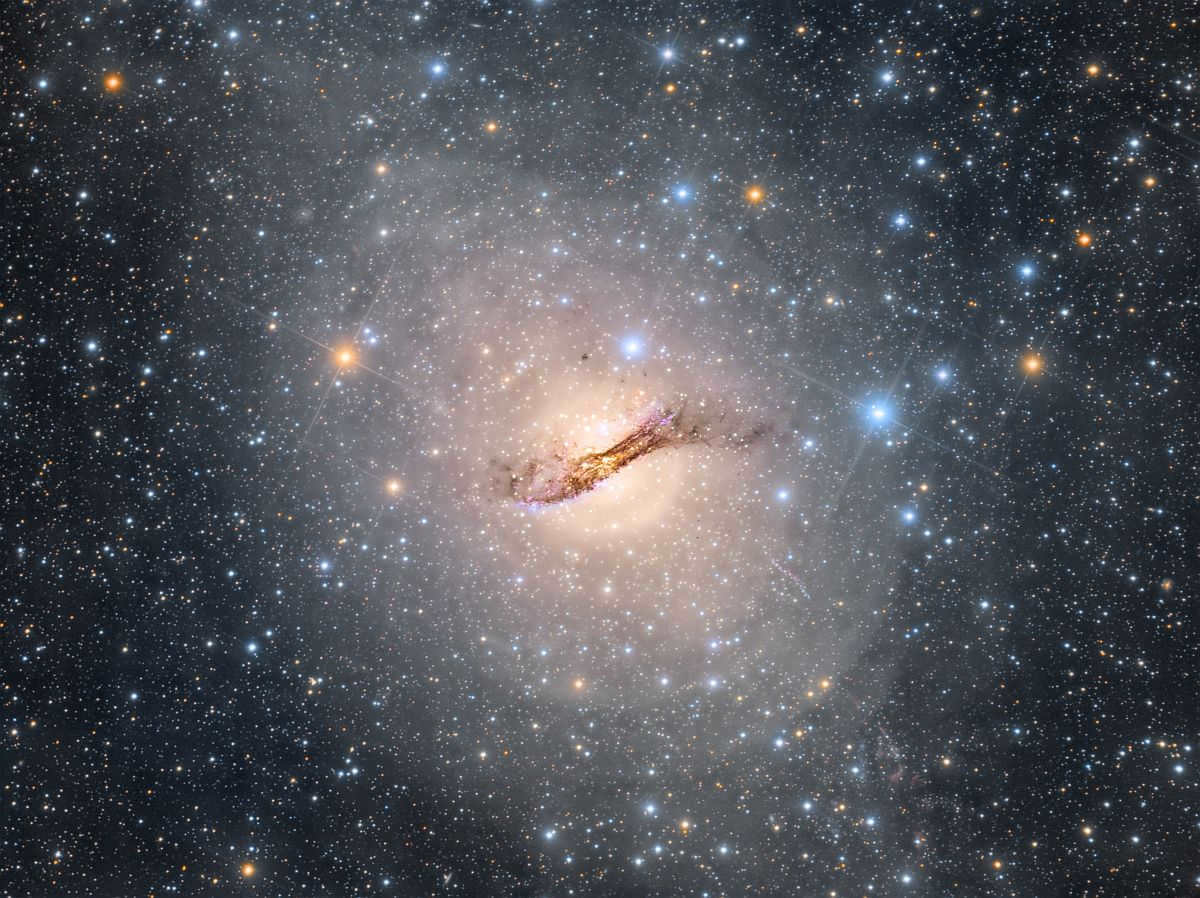
Image of the Centaurus A Galaxy (Image captured with a total exposure of 120 hours!).
The subsequent objective within this constellation is NGC 5128 or Centaurus A, which ranks as the fifth brightest galaxy in Earth’s atmosphere. This particular celestial body is a nearby lenticular galaxy of the S0 variety, featuring a polar rim (or belt). Furthermore, it serves as the most potent source of radio and X-ray radiation and is, in fact, the closest active galaxy to us (not to be confused with AGYA).
Experience a virtual tour of this galaxy
Centaurus A is a more accessible celestial object compared to ω Cen due to its declination of -43.1 degrees and an apparent brightness of 6.6 stellar magnitudes. Observing NGC 5128 at mid-northern latitudes poses significant challenges given these parameters. At the 50th parallel, one can barely discern a faint, nearly circular patch of light using 10×50 binoculars, situated five degrees west of μ Cen. However, the prominent dust streak (also known as the polar rim) will remain indistinguishable due to the object’s low position above the horizon.
Take a closer look at Centaurus A
Centaurus is a constellation located in the southern hemisphere. It belongs to the group of Greek constellations and stands out as one of the largest representatives.
This legendary being is known as a centaur – a hybrid creature with the body of a horse and the upper body of a man. Many believe that the centaur represents Chiron, a wise and noble centaur who acted as a mentor to several famous heroes including Heracles, Peleus, Achilles, Theseus, and Perseus.
The constellation Centaurus is home to two of the brightest stars in the night sky, Alpha Centauri and Beta Centauri. Additionally, this constellation contains several other notable celestial objects, such as the brilliant galaxy Centaurus A, the globular cluster Omega Centauri, the famous Blue Nebula (NGC 3918), and the intriguing Boomerang Nebula.
The constellation Centaurus was officially recognized by the ancient astronomer Ptolemy in the second century. However, the story of the centaur can be traced back even further, as it is mentioned by the astronomer Eudoxus and the poet Aratus.
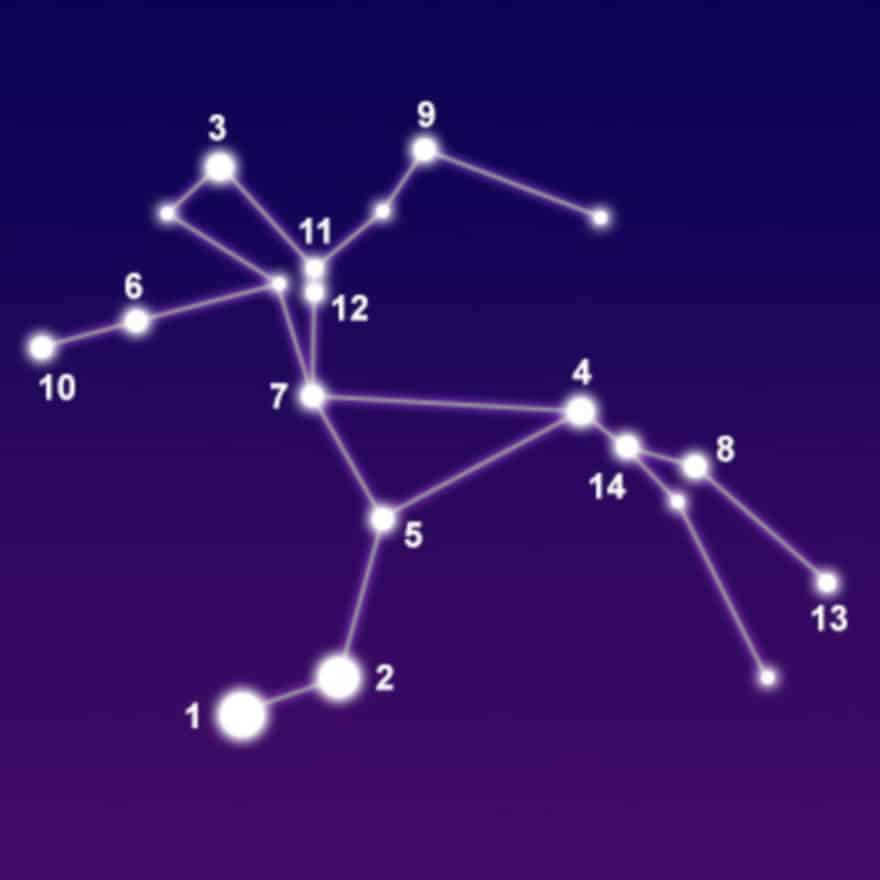
Facts, Position, and Map
Centauri, with an area of 1,060 square degrees, stands as the 9th largest constellation. Situated in the third quadrant of the southern hemisphere (SQ3), it spans latitudes from +25° to -90°. It shares its borders with Sails, Fly, Wolf, Libra, Hydra, Southern Cross, Circulus, Kiel, and Pump.
Within this constellation, there are 11 stars known to have planets, but no Messier objects. The brightest star, Alpha Centauri, claims the fourth spot among the brightest stars in the sky. Following closely, Beta Centauri ranks as the 10th brightest. Additionally, there are three meteor streams: Alpha Centauris, Omicron Centauris, and Theta Centauris.
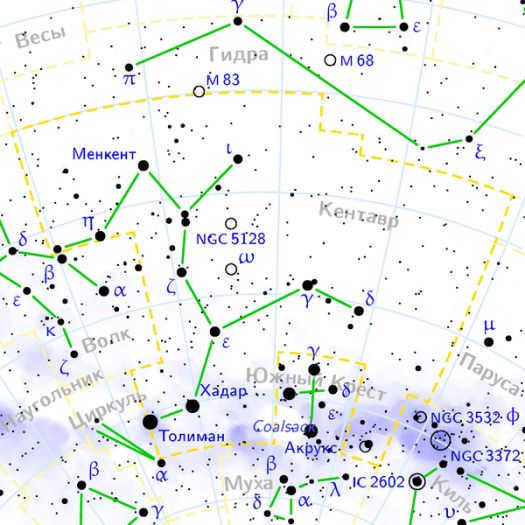
Legend
The tale begins with the Babylonians who held faith in the existence of a hybrid creature known as the bison man (MUL.GUD.ALIM). This entity had the body of a bison with four legs and the head of a man, or alternatively, the upper body of a human attached to the lower body of a bison or bull. They revered it as their sun deity Utu (Shamash).
In Greek mythology, the hybrid creature was the Centaur, embodying half man and half horse. However, the specific centaur associated with the constellation is not conclusively known (as there are several). The Roman poet Ovid believed it to be Chiron, the wise centaur who acted as a mentor to Achilles, Jason, Theseus, Heracles, and Apollo’s son Asclepius (also known as Serpentes). Nevertheless, many classify Chiron as Sagittarius.
Chiron, the offspring of Cronus and the sea nymph Philira, engaged in a romantic encounter with her. However, just as this was happening, his wife Rhea materialized. To avoid the accusation of infidelity, he magically transformed himself into a magnificent horse, resulting in the birth of a unique hybrid child.
Chiron commanded great reverence for his teachings in the realms of medicine, music, and hunting. He resided within a cave situated on Mount Pelion, where he mentored numerous renowned heroes. Tragically, his demise came unexpectedly when he was struck by an arrow from Heracles that had been drenched in Hydra poison, an ailment for which there existed no remedy. Despite his immortality, Chiron endured immense suffering, incapable of experiencing death. Moved by compassion, Zeus resolved to release him from this eternal torment by stripping away his immortal status.
The constellation Centaurus is illustrated as a centaur offering animals (constellation Wolf) as sacrifices to the gods on an altar (Sacrifice). The forelegs of the centaur contain the stars Alpha and Beta Centauri. These stars point towards the Southern Cross, which is positioned under the hind legs of the Centaur.
Principal stars
Discover the prominent stars of the Centaurus constellation in the southern sky, complete with detailed descriptions and characteristics.
Rigel Centaurus (Alpha Centauri) is a triple star system located 4,365 light-years away. It has an apparent visual magnitude of -0.27. The brightest component is Alpha Centauri A, which has a visual magnitude of -0.01. It is the fourth brightest individual star, ranking behind Arcturus (Volopassus).
Alpha Centauri A is a primary star that closely resembles the Sun. It is a yellow-white main-sequence star with a spectral type of G2V. It is approximately 10% more massive than the Sun.
Alpha Centauri B, a K1V main-sequence star, is smaller than the Sun. It has a magnitude of 1.33, making it the 21st brightest star in the sky, just slightly brighter than Regulus in the Leo constellation.
Scientists estimate that Alpha Centauri B and the Sun are approximately the same age, with both being around 4.85 billion years old. However, Alpha Centauri B is believed to be 250 million years older than the Sun.
Another star in the Alpha Centauri system is Proxima Centauri, also known as Alpha Centauri C. It is a red dwarf that is gravitationally bound to Alpha Centauri AB and is located 2.2 degrees away from them. Proxima Centauri is classified as either M5Ve or M5Vie, indicating that it may be a small main-sequence star or a subdwarf. It has a mass equivalent to 12.3 times that of the Sun. Scientists predict that Proxima Centauri will remain a main-sequence star for the next 4 trillion years.
Proxima Centauri, the closest star to our solar system, is located only 4.24 light-years away from the Sun. However, due to its 11.05 magnitude, it cannot be seen without the use of instruments. This star is known for its flaring variable nature, which means its brightness can fluctuate dramatically, ranging from 11.0 to 11.9. Proxima Centauri was first discovered by Robert Innes in 1915.
Alpha Centauri, also known as Rigel Centaurus (Centaurus’ foot), Bungula (hoof), and Toliman (ostrich), is the closest star system to us. If there were observers in that system, they would be gazing at the same sky as us.
Hadar, also known as Beta Centauri, is a blue-white giant star located 348.83 light-years away. With a visible magnitude of 0.6, it is among the top ten brightest stars. Hadar belongs to the spectral class B1III and its name is derived from Arabic, meaning “earth”.
There is a binary star system known as Hadar A, where the companion star is located 1.3 arc seconds away. Hadar A is a spectroscopic binary system, consisting of two identical stars that orbit each other with a rotation period of 357 days. One of the stars in this system is a Beta Cepheus variable, meaning its brightness varies due to surface ripples. Hadar B, on the other hand, orbits around the main pair in 250 days.
Another interesting star is Menkent, also known as Theta Centauri, which is an orange giant of K-type (K0IIIb). It is located 60.9 light-years away and has an apparent magnitude of 2.06. The name Menkent translates from Arabic as “centaur’s shoulder” and it may also be referred to as Haratan.
Lastly, there is Mulifen, represented by two stars of spectral type A0, with an apparent visual magnitude of 2.9. This system is located 130 light-years away and has a combined magnitude of 2.2. The stars in Mulifen complete a full revolution around each other every 83 years.
Epsilon Centauri, a giant star of blue-white color (B1III), is known as a Beta Cepheus-type variable star, meaning that its brightness changes due to pulsations on its surface. Its average magnitude is 2.29, but it can vary between 2.29 and 2.31. This star is located at a distance of 380 light-years.
This particular Centauri is a young B-type dwarf star, not even 20 million years old. It is classified as a Ve star, which means it exhibits variable emissions in its spectral hydrogen lines. It also falls into the category of Gamma Cassiopeia type stars, which have a gas disk formed around their equatorial line due to their rapid rotation. This star has an equatorial velocity of 310 km/s and completes one rotation in a day. It is situated 30 light-years away and has an apparent magnitude of 2.33.
Zeta Centauri is a double star that can be observed with a spectrograph. It has a brightness of 2.55 and is located 385 light-years away. The name “Zeta Centauri” is derived from Arabic and means “the bright star of the centaur’s body”. The star falls into the spectral class B2.5IV. Its orbital period lasts longer than 8 days.
Delta Centauri is a star of type B. It belongs to the B2IVne class. It is also classified as a variable star, specifically of the Gamma Cassiopeia type. Located at a distance of 395 light-years, its brightness varies between magnitudes of 2.51 and 2.65. The star is known as “Ma Wei” in Chinese, which translates to “third star of the horse’s tail”. This name refers to the asterism formed by Delta Centauri together with G and Rho Centauri.
Cap Centauri is a double star located 540 light-years away. It is classified as a B2IV spectral type. The primary star is a blue-white subgiant of type B, with a visual magnitude of 3.13. Its companion is separated by a distance of 0.12 arc seconds. In China, it was known as Ke Kwan, which translates to “the third star of the imperial guard”.
BPM 37093 is a white dwarf star with a spectral class of DAV4.4. It is classified as a variable star, specifically a DAV or ZZ Kita type, which is a pulsating white dwarf with a hydrogen-filled atmosphere and spectral type DA. The brightness of BPM 37093 varies due to non-radial pulsations caused by gravitational waves. It is located 53 light-years away and has a magnitude of 14.0.
Astronomical bodies
Centaurus A (NGC 5128) – is positioned as the fifth most luminous object in the celestial sphere and is among the radio galaxies that are closest to our solar system. It is classified as a lenticular or giant elliptical galaxy and is situated at a distance of 10-16 million light-years. Its apparent visual brightness is measured at 6.84. There is a possibility that a supermassive black hole is located at its core.
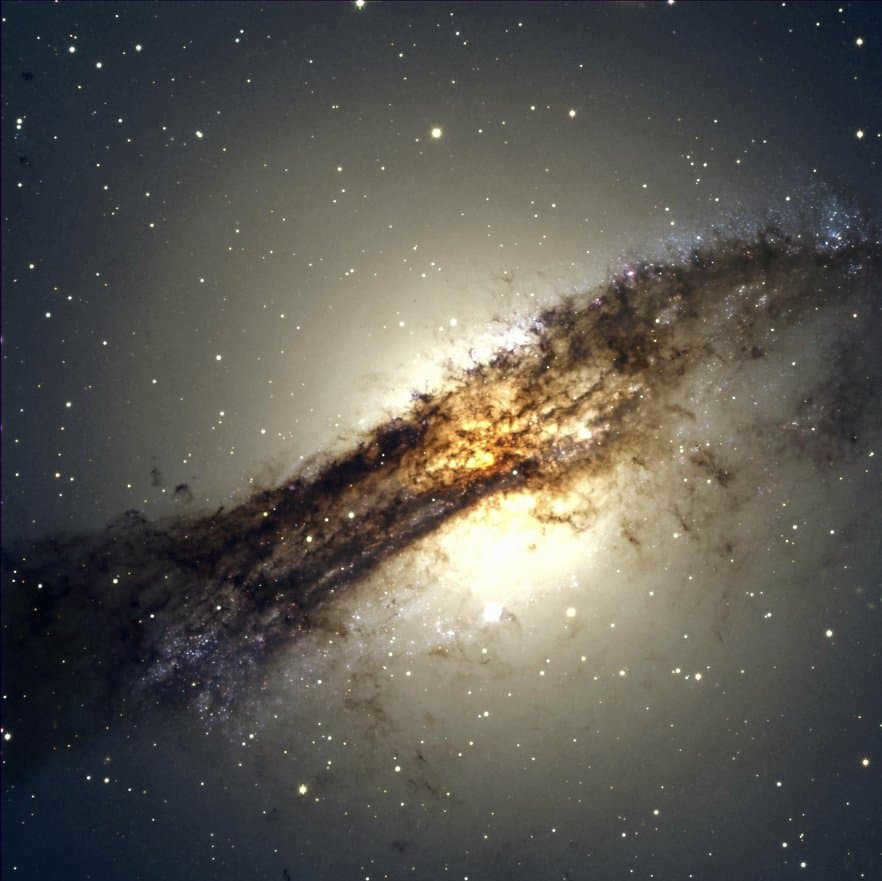
Centaurus A might be undergoing a collision with a spiral galaxy currently undergoing absorption, triggering a powerful burst of star formation within the galaxy. The galaxy contains over 100 such regions within its disk. In 1986, the supernova SN 1986G was discovered, originating from a white dwarf star that had exploded. This star is situated at the center of the Centaurus A subgroup, known as the Centaurus A/M83 group of galaxies.
Omega Centauri (NGC 5139) is a massive globular cluster located approximately 4 degrees south of Centaurus A. It has an apparent magnitude of 3.7 and is situated approximately 15,800 light-years away. Orbiting the Milky Way, it is one of the largest and brightest globular clusters, visible to the naked eye without any equipment.
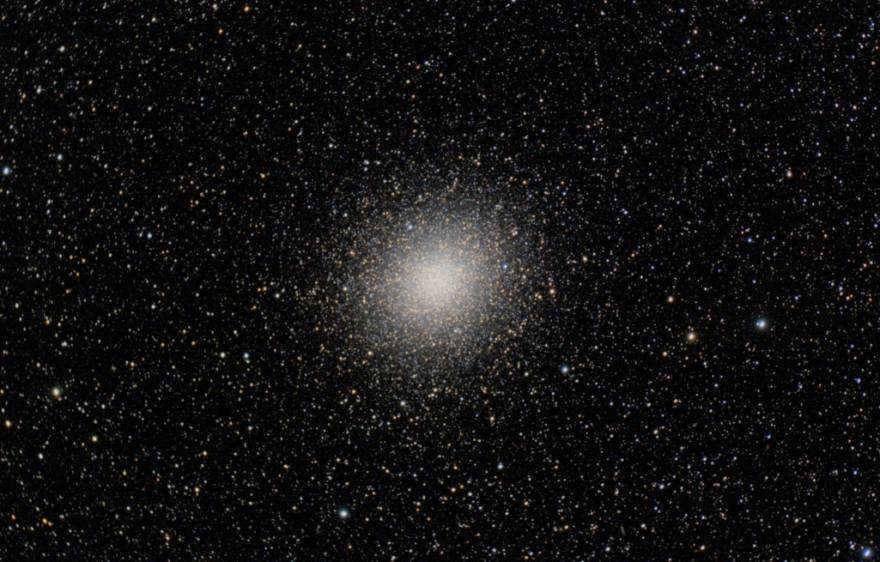
The cluster was initially recorded by Ptolemy as a single star. However, in 1677, Edmund Halley observed it as a nebula until the 1830s when William Herschel determined that it was a cluster located in front of us.
With an age of 12 billion years, the cluster contains millions of population II stars. These stars are densely packed together at the center, with a separation of only 0.1 light-years.
Scientists believe that Omega Centauri may be the birthplace of Kapteyn’s star, a red dwarf located in the Painter constellation. It is also speculated that the cluster may harbor a black hole at its core. Furthermore, it is theorized that Omega Centauri is playing a role in the formation of a dwarf galaxy’s nucleus, which was torn apart and absorbed by the Milky Way.
NGC 4945 stands out as a remarkably luminous galaxy within the Centaurus A/M83 cluster and holds the distinction of being the second brightest in the Centaurus A subgroup. Its existence was first documented in 1826 by the astute observer James Dunlop.
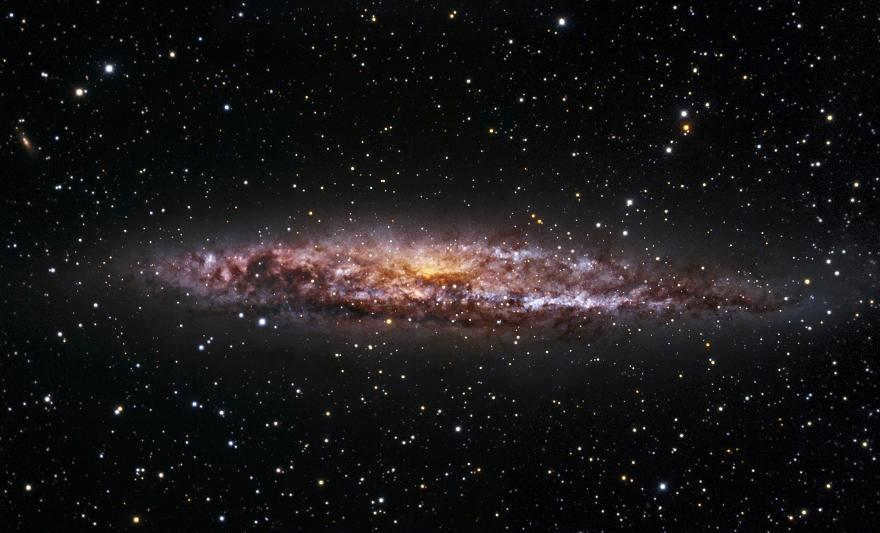
NGC 4945 is located 11.7 million light-years away and has an apparent visual magnitude of 9.3. This spiral galaxy is unique due to its energetic Seyfert-type nucleus, which is believed to house a massive black hole.
Within Centauri, there exists a polar ring galaxy known as NGC 4650A. This galaxy features an outer ring of stars and gas that rotates around its poles.
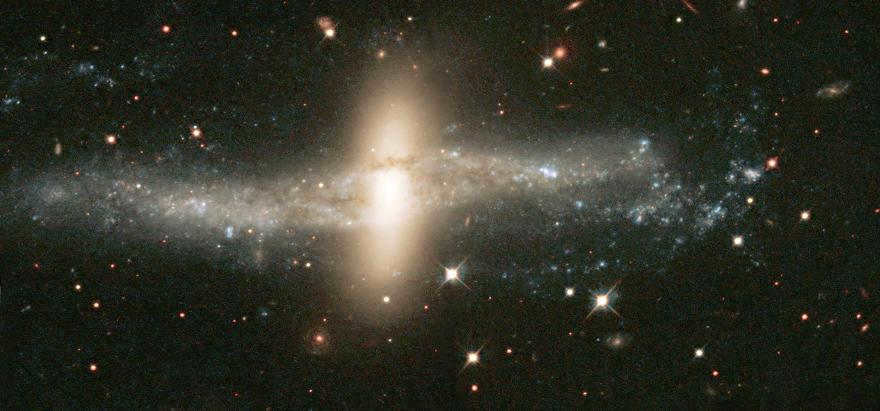
Polar ring galaxies are formed as a result of the gravitational interaction between two galaxies, with approximately 100 of them known to scientists. NGC 4650A, also known as Centaurus A, is one such polar ring galaxy. It has a visible magnitude of 13.9 and is located about 130 million light years away from Earth.
NGC 3918, on the other hand, is a blue planetary nebula often referred to as the Southerner.
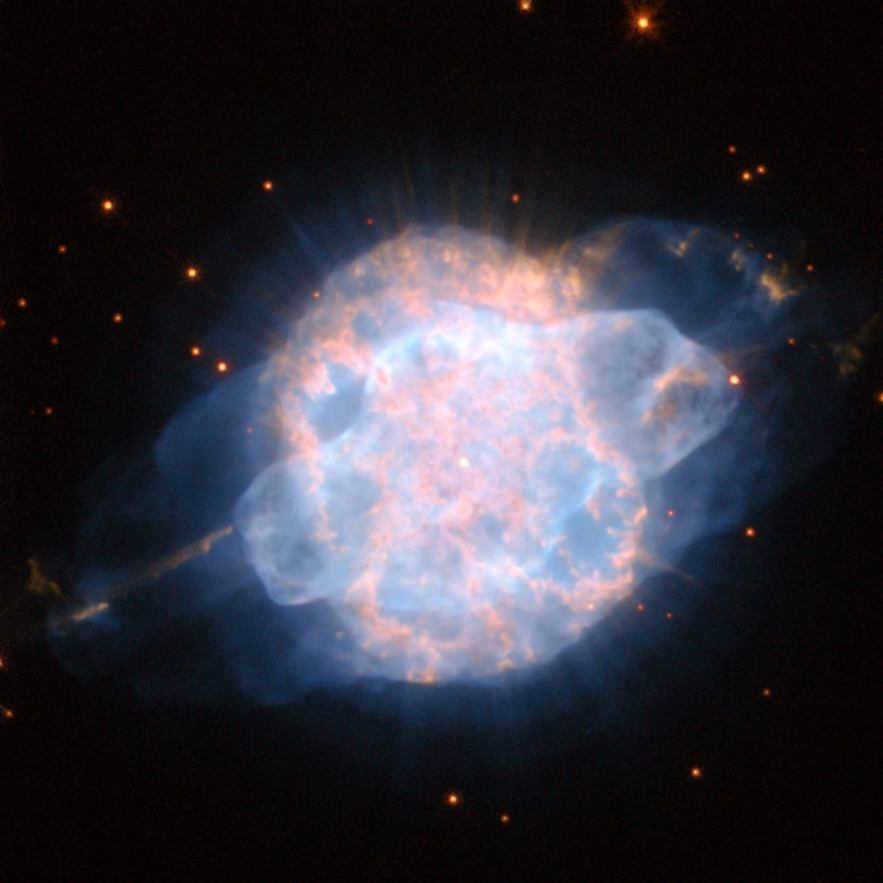
Located in the southern region of the sky, the planetary nebula is known for its remarkable brightness. With an apparent visual magnitude of 8.5, it can be easily observed even with a small telescope. Discovered by John Herschel in 1834, this celestial object is situated approximately 4900 light years away.
NGC 4622, on the other hand, is a spiral galaxy found at a distance of 111 million light-years. Boasting an apparent visual magnitude of 12.6, it showcases its beauty from afar.
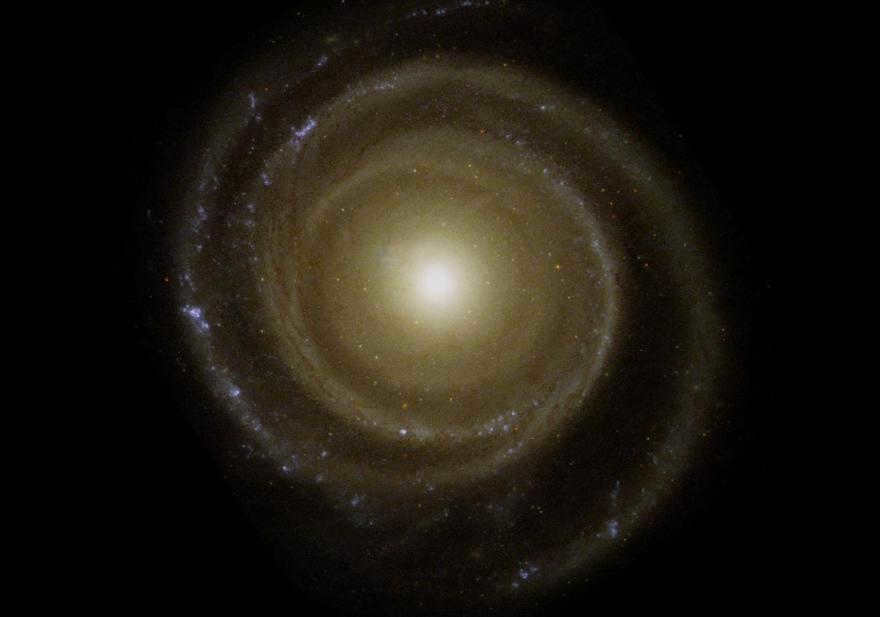
It is sometimes known as a “retrograde galaxy”. Unlike most spiral galaxies that are known, it possesses leading spiral arms – the tips point in the direction of the disk’s rotation (in typical spiral galaxies, the branches usually follow instead of lead).
It possesses an inner trailing spiral arm. Scientists initially believed that the inner arm also functioned as the leading arm, but it turned out to be the trailing arm. They subsequently discovered that the galaxy had two new faint arms in the inner disk that moved in the opposite direction of the outer pair.
NGC 5090 and NGC 5091 are a pair of galaxies in the midst of merging and colliding. They are situated 150 million light-years away from us.
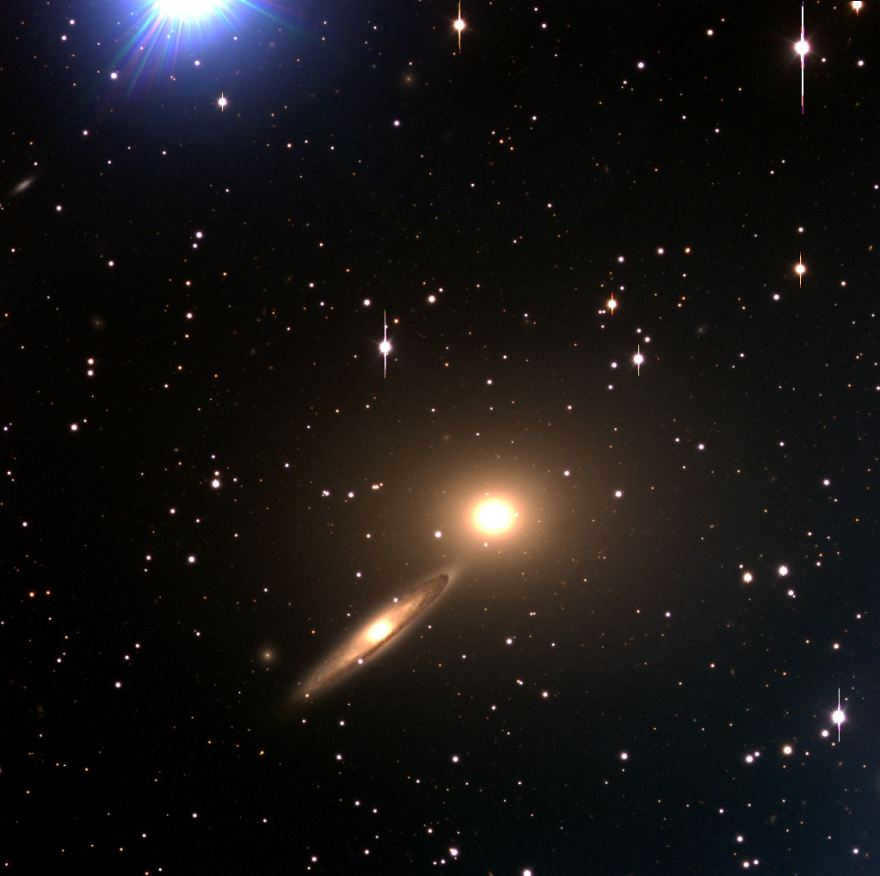
NGC 5090 is categorized as an elliptical galaxy and is well-known for its strong emission of radio waves. On the other hand, NGC 5091 is a spiral galaxy that captures our attention due to its unique orientation, appearing almost face-on. However, this spiral galaxy has experienced a disturbance caused by a collision. These two galaxies have apparent magnitudes of 12.6 and 13.9, respectively.
Located approximately 150 million light-years away, NGC 4696 stands out as an elliptical galaxy in the vast expanse of space. It holds the title of being the brightest galaxy in the Centauri cluster, also known as A3526. With an apparent magnitude of 11.4, this galaxy shines brightly in its surroundings. Additionally, within the same cluster, one can find numerous dwarf elliptical galaxies surrounding NGC 4696.
NGC 5253 is a galaxy that does not have a regular shape. It has a brightness that can be observed and measured, known as its apparent magnitude, which is 10.3. The galaxy is located at a distance of 10.9 million light-years from Earth. NGC 5253 is a part of a subgroup of galaxies called M83. It was first discovered by William Herschel in the year 1787. One interesting feature of NGC 5253 is that it contains one of the most bright and notable supernovae of the 20th century, known as SN1972E, which has an apparent magnitude of 8.5.
NGC 5408 is another irregular galaxy that was discovered by William Herschel in the year 1834. It is located in close proximity to the M83 subgroup, but it is still uncertain if it is a part of that subgroup. The apparent visual magnitude of NGC 5408 is 12.2, which means it is less bright compared to NGC 5253. Its distance from Earth is 15.7 million light-years.
NGC 4603 is a spiral galaxy that contains a specific type of variable stars called Cepheid-type variables. It is one of the most distant galaxies of this type, with an apparent magnitude of 12.3. The apparent magnitude indicates that NGC 4603 is not as bright as NGC 5253 or NGC 5408.
NGC 5291 is a system of galaxies that are interacting with each other and are surrounded by a ring-like structure. Within this system, there are young stars that are forming tidal dwarf galaxies.
If you want to explore the constellation Centaurus in the southern hemisphere in more detail, you have the chance to do so using not only our photos but also 3D models and an online telescope. To aid in your search, a star map will be helpful.
The night sky has always had a magical effect on people, captivating and inspiring the imagination with its countless constellations. Everyone is familiar with names like the Big Dipper, Orion, and Cassiopeia in the northern hemisphere. In the southern hemisphere, there are constellations such as the Big Dog and the Southern Cross, which navigators have relied on for centuries to navigate their ships. Each constellation has its own unique history and legend, including the well-known Centaurus in the southern hemisphere.
The tale of the constellation

The constellation Centaurus, also known as Centaurus, is named after the centaur Chiron. Chiron was the offspring of the oceanid Philira and the god Cronus, who transformed into a horse. Unlike other centaurs, Chiron was known for his kindness and wisdom. He served as a mentor to numerous heroes of ancient times, including Theseus, Achilles, and Jason. Chiron even taught the renowned healer Asclepius the art of medicine. In a selfless act, Chiron sacrificed his immortality to free the imprisoned Prometheus. As a tribute to his bravery, the gods immortalized Chiron by transforming him into the constellation Centaurus.
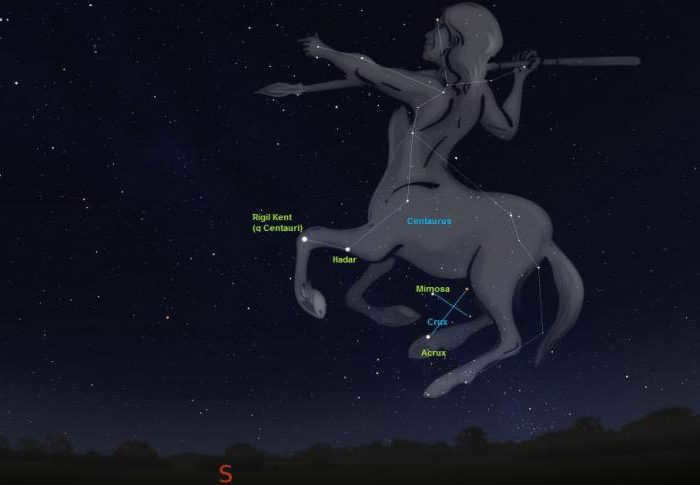
It is a well-known fact that the constellation is situated in the southern hemisphere and cannot be seen from the territory of Russia. Although theoretically a part of it can be observed, it is so close to the horizon that Centaurus is effectively invisible. The best locations for observing this constellation are at latitudes ranging from 26° north to 90° south. It is most easily seen during the first half of spring, specifically in the months of March and April. In terms of its dimensions, Centaurus covers approximately 1,060 square degrees and ranks ninth in size among all constellations.
This group of stars in the nighttime sky consists of 389 entities. All of them are observable without the need for any optical instruments. Adjacent to Centaurus are additional constellations, including Lupus, Carina, Hydra, and Crux. Interestingly, prior to the 17th century, Crux was not considered a separate element of the starry sky, but was instead a part of the Centaurus constellation.
The Centauri’s Most Renowned Attractions
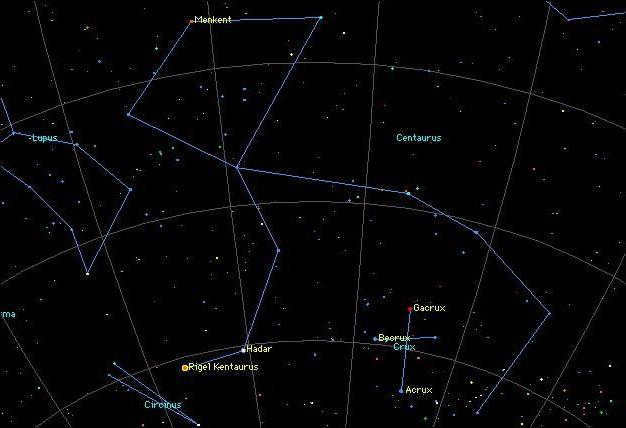
Proxima Centauri, also known as Alpha Centauri or Rigel Centaurus, is a prominent star system within a constellation. With a magnitude of 0.7, it shines brightly among the stars. The system consists of two stars, Alpha and Beta, as well as a red dwarf named Proxima Centauri. Are there any other constellations that contain such a brilliant star system in such close proximity to our own planet? Proxima Centauri, aptly named for its proximity, is located a mere 4.4 light years away from Earth.
A short overview of the rest of the stars
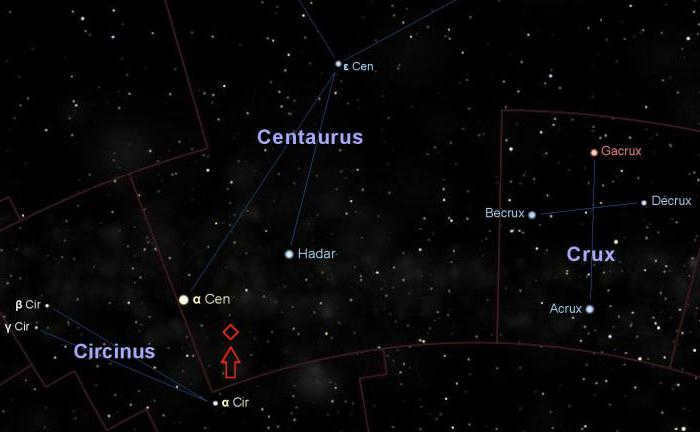
In addition to stars like Alpha and Proxima Centauri, the constellation is also famous for other celestial bodies. For instance, there is Beta Centauri, a first magnitude star also known as Agena, which means “knee”. Another name for it is Hadar, which translates to “earth”. Similar to Alpha Centauri, it is composed of multiple stars, but unlike Alpha Centauri, it is much more distant from our planet. Its distance from us is 525 light years.
Hadar is ranked tenth in terms of brightness among the stars in the night sky. The third brightest star in the Centauri constellation is named Theta, also known as Menkent, which translates to “centaur’s shoulder”. It has a star magnitude of 2.06 and is situated over 60 light years away from our solar system. Another notable star in this constellation is Lucy, scientifically designated as VRM 37093. This white dwarf star acquired its name from the famous Beatles song “Lucy in the Sky with Diamonds”.
Additional items within the constellation
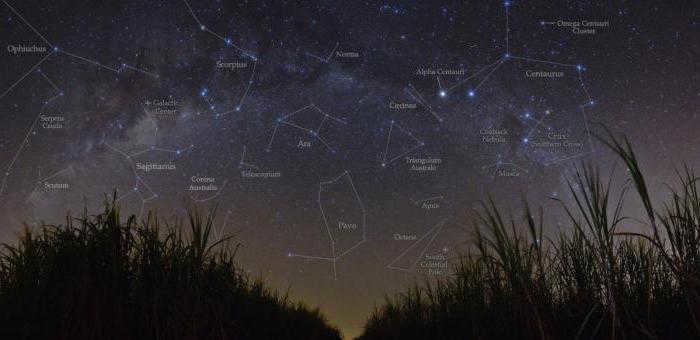
The constellation also has the presence of deep space objects, such as distant star clusters and nebulae. One of these objects is a globular cluster known as NGC 5139, which is considered to be one of the largest and brightest in the Milky Way galaxy. NGC 5139 contains millions of stars that belong to population 2, the first stars discovered in our night sky. Some of the stars in the middle of this cluster are less than a tenth of a light-year apart. Additionally, this star cluster is much closer to our solar system than others.
Another constellation, Centauri, is home to a galaxy shaped like a lens, known as NGC 5128. This galaxy has a low rate of star formation and falls between the spiral and elliptical types of galaxies. It is primarily composed of red stars in the late stages of evolution. NGC 5128 ranks as the fifth brightest galaxy.
We can also discuss the NGC 3918 nebula, which is occasionally called the “Southerner.” When observed through a telescope, it appears as a compact blue disk resembling the planet Neptune.





